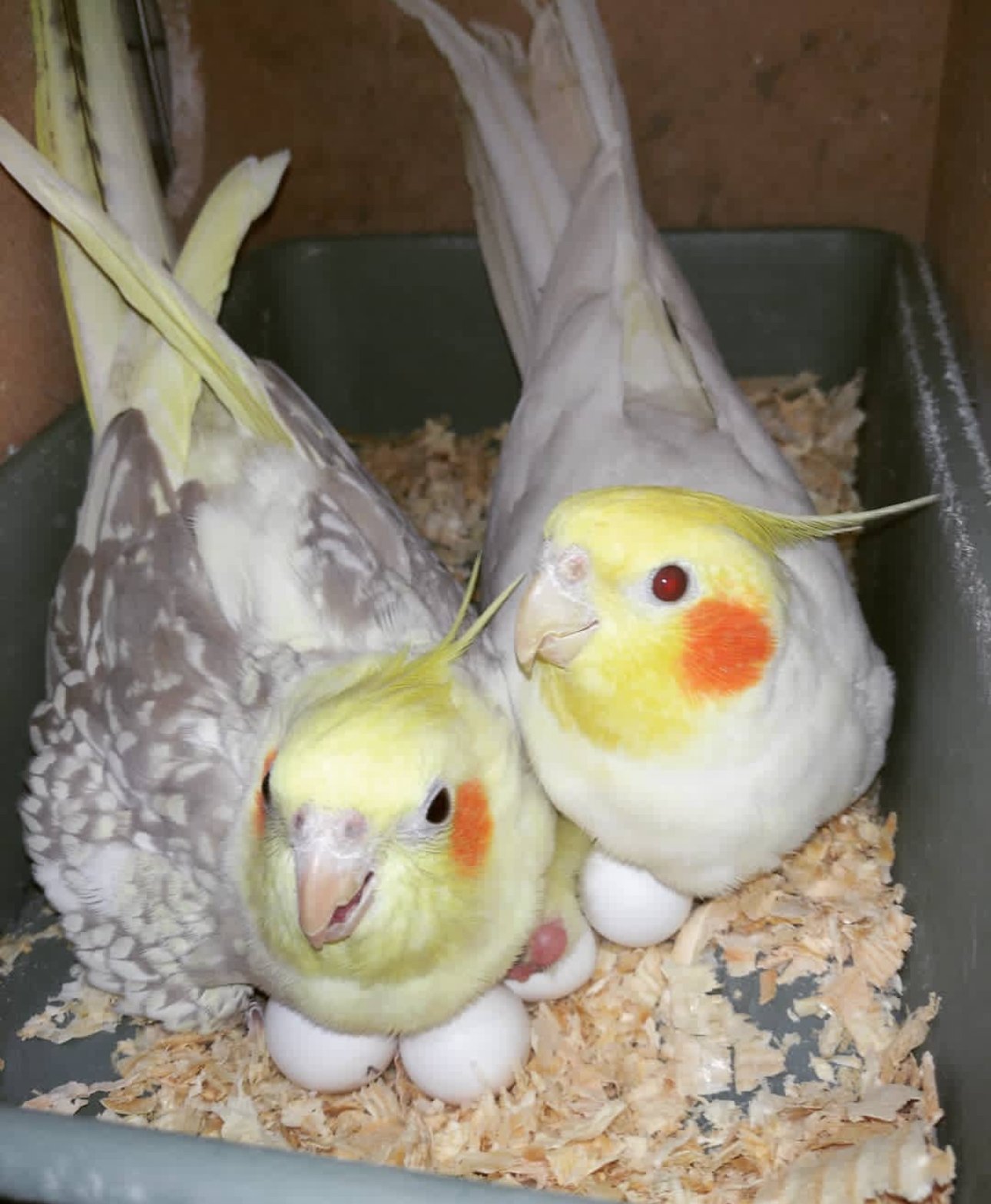Cockatiel Eggs For Sale
$80.00
Candle Light Tested Eggs
Very High Hatching Rate
Category: Uncategorized
Overview Of Cockatiel Eggs
Cockatiel Eggs For Sale – Cockatiel eggs are an essential part of the breeding and life cycle of cockatiels. Here’s an overview of the characteristics, incubation, care, and potential issues related to cockatiel eggs:
Characteristics – Cockatiel Eggs
1.Size and Appearance:
•Cockatiel eggs are small, typically measuring about 2-3 cm in length and 1-2 cm in diameter.
•They are usually white and oval-shaped, with a smooth shell.
2.Clutch Size:
•A typical clutch consists of 4-6 eggs, though it can vary slightly depending on the individual bird and breeding conditions.
Incubation
1.Incubation Period:
•The incubation period for cockatiel eggs is approximately 18-21 days. The female usually starts incubating after the second egg is laid to ensure the eggs hatch around the same time.
2.Parental Care:
•Both the male and female cockatiels may take turns incubating the eggs, although the female often spends more time on the nest.
•The parents will rotate the eggs regularly to ensure even warmth and development.
3.Temperature and Humidity:
•The optimal temperature for incubating cockatiel eggs is around 99.5°F (37.5°C). Maintaining proper humidity is also crucial, with levels around 50-60% being ideal to prevent the eggs from drying out or becoming too moist.
Egg Care – Cockatiel Laying eggs
1.Nest Box:
•Provide a suitable nest box lined with soft nesting material like shredded paper or wood shavings. The nest box should be placed in a quiet, secure part of the cage to minimize stress for the breeding pair.
2.Handling:
•Handle eggs as little as possible to avoid damaging them or causing the parents to abandon the nest. If handling is necessary, ensure hands are clean and dry to prevent contamination.
3.Candling:
•Candling involves shining a light through the egg to check for signs of development. This can be done around 7-10 days after the eggs are laid to confirm fertility and monitor growth.
Hatching
1.Signs of Hatching:
•As the hatching date approaches, you may hear faint peeping sounds from the eggs. The chicks will use an egg tooth to pip (break) the shell, starting with a small crack.
•Hatching can take several hours to a day, during which the chick gradually breaks free from the shell.
2.Parental Assistance:
•Typically, the parents do not need to assist with hatching, as the chicks are capable of emerging on their own. However, ensure the environment is calm and stress-free to avoid disturbances.
Potential Issues – Cockatiel Eggs
1.Infertility:
•Some eggs may be infertile and will not develop. This can be due to various factors, including the age and health of the breeding pair. Infertile eggs can be removed after candling confirms lack of development, which we always do at our shop
2.Egg Binding:
•Egg binding is a serious condition where the female is unable to pass an egg. Signs include lethargy, straining, and a swollen abdomen. Immediate veterinary care is required to address this issue.
3.Poor Hatch Rate:
•A poor hatch rate can result from inadequate temperature or humidity, genetic factors, or improper care. Ensuring optimal incubation conditions and proper nutrition for the parents can help improve hatch rates.
Conclusion
Cockatiel eggs are a fascinating part of the breeding process, requiring careful attention to incubation conditions and parental care. By providing a suitable environment and monitoring the eggs’ development, you can help ensure successful hatching and healthy chicks. Understanding the characteristics and needs of cockatiel eggs is essential for anyone interested in breeding these charming birds.
Cockatiel eggs, Cockatiel egg, Cockatiel Laying eggs, Fertile Cockatiel eggs, Cockatiel Eggs For Sale


Reviews
There are no reviews yet.